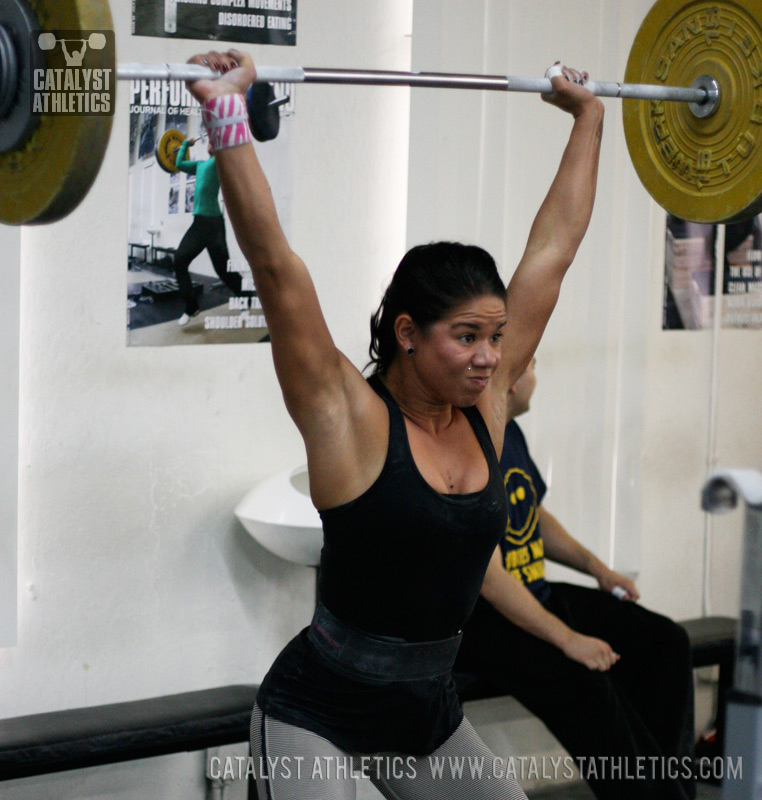Articles
The Power Jerk: Yes, It Has Uses
October 10 2012

October 10 2012

I've always hated power jerks, like most people who split jerk as their prefered jerk method. It's awkward, uncomfortable and difficult. But I have a grudging respect and appreciation for the exercise because it can be immensely valuable as a training exercise for split jerkers. The power jerk forces a solid, strong dip and strong drive, and possibly more importantly, a balanced and correctly oriented drive. With the split jerk, a lifter can get away with a certain amount of imbalance or forward push of the bar; the power jerk allows virtually none of this margin for error. Accordingly, it's a great exercise for training a vertical dip and drive and a correct punch of the bar not just up, but slightly back.
The power jerk does't need to be performed with heavy weights. In fact, I generally prefer using relatively light weights that allow the lifter to not just do the lift extremely well, but with great speed. This is what carries over to the split jerk to help dial it in. Focus on a vertical and high drive.
Power jerks can be incorporated into your training in a number of ways. They can be performed for doubles and triples on your lighter training days, used as a technique primer immediately before split jerks to help train the vertical dip and drive, or they can be combined into a complex with the split jerk, such as 2 power jerks + 1 split jerk.
They can also be helpful for lifters working to develop a more elastic dip and drive for the jerk. For this purpose, the majority of reps should be relatively light initially to allow the lifter to develop a feel for the timing, and gradually the weights can be increased. Heavier weights will include more barbell whip, which will increase the effectiveness of the elastic jerk dip and drive.
The power jerk does't need to be performed with heavy weights. In fact, I generally prefer using relatively light weights that allow the lifter to not just do the lift extremely well, but with great speed. This is what carries over to the split jerk to help dial it in. Focus on a vertical and high drive.
Power jerks can be incorporated into your training in a number of ways. They can be performed for doubles and triples on your lighter training days, used as a technique primer immediately before split jerks to help train the vertical dip and drive, or they can be combined into a complex with the split jerk, such as 2 power jerks + 1 split jerk.
They can also be helpful for lifters working to develop a more elastic dip and drive for the jerk. For this purpose, the majority of reps should be relatively light initially to allow the lifter to develop a feel for the timing, and gradually the weights can be increased. Heavier weights will include more barbell whip, which will increase the effectiveness of the elastic jerk dip and drive.
